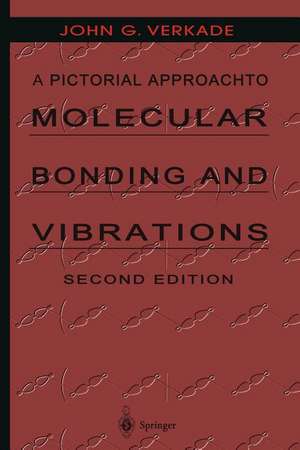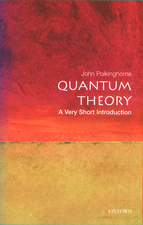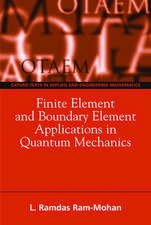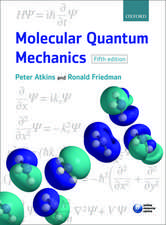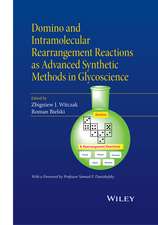A Pictorial Approach to Molecular Bonding and Vibrations
Autor John G. Verkadeen Limba Engleză Paperback – 17 oct 2011
Preț: 393.35 lei
Nou
Puncte Express: 590
Preț estimativ în valută:
75.27€ • 78.85$ • 62.38£
75.27€ • 78.85$ • 62.38£
Carte tipărită la comandă
Livrare economică 09-23 aprilie
Preluare comenzi: 021 569.72.76
Specificații
ISBN-13: 9781461384977
ISBN-10: 1461384974
Pagini: 388
Ilustrații: XVIII, 367 p.
Dimensiuni: 155 x 235 x 20 mm
Greutate: 0.54 kg
Ediția:2nd ed. 1997. Softcover reprint of the original 2nd ed. 1997
Editura: Springer
Colecția Springer
Locul publicării:New York, NY, United States
ISBN-10: 1461384974
Pagini: 388
Ilustrații: XVIII, 367 p.
Dimensiuni: 155 x 235 x 20 mm
Greutate: 0.54 kg
Ediția:2nd ed. 1997. Softcover reprint of the original 2nd ed. 1997
Editura: Springer
Colecția Springer
Locul publicării:New York, NY, United States
Public țintă
Lower undergraduateCuprins
1 The Orbital Picture for Bound Electrons.- 1.1 Traveling and Standing Waves.- 1.2 Wave Energy and Interference.- 1.3 Electron Orbitals.- 1.4 Normalization and Orthogonality.- 1.5 Systems with Many Electrons.- 1.6 Flexibility of Orbital Sets.- 2 Atomic Orbitals.- 2.1 Shapes of Canonical AOs.- 2.2 Sizes of Canonical AOs.- 2.3 Energies of Canonical AOs.- 2.4 Hybrid Orbitals.- 2.5 Hybrid Orbitals through s-p Mixing.- 2.6 Equivalent s1p1 Hybrid Orbitals.- 2.7 Equivalent sp2 Hybrid Orbitals.- 2.8 Equivalent sp3 Hybrid Orbitals.- 2.9 Intermediate Hybrid Orbitals.- 2.10 Accessing Node Game.- 3 Diatomic Molecules.- 3.1 Molecule Formation and Motions.- 3.2 Generator and Molecular Orbitals.- 3.3 Generator Orbitals and Molecular Motions.- 3.4 Bond Strengths.- 3.5 Heteronuclear Diatomic Molecules.- 3.6 Localized MOs for Diatomics.- 4 Linear Triatomic Molecules.- 4.1 Linear FHF¯.- 4.2 FXeF.- 4.3 OCO.- 4.4 Vibrational Modes for Linear Triatomics.- 5 Triangular and Related Molecules.- 5.1 H3+.- 5.2 N3+.- 5.3 Electron Dash Structures and Molecular Geometry.- 5.4 BF3.- 6 Bent Triatomic Molecules.- 6.1 H2O.- 6.2 NO2¯.- 7 Polygonal Molecules.- 7.1 Te42+.- 7.2 cyclo-C4H4.- 7.3 cyclo-C5H5¯.- 7.4 cyclo-C6H6, cyclo-C7H7+, cyclo-C8H82?.- 8 Octahedral and Related Molecules.- 8.1 ICl4¯.- 8.2 BrF5.- 8.3 B5H9.- 8.4 PF6¯.- 8.5 Octahedral Transition Metal Complexes—Some Special Considerations.- 8.6 CoF63? and Co[P(OCH3)3]63+.- 8.7 B6H62?.- 8.8 Mo6Cl84+.- 9 Tetrahedral and Related Molecules.- 9.1 PnH3.- 9.2 P4.- 9.3 CH4.- 9.4 PO43?.- 9.5 VCl4¯.- 10 Bipyramidal and Related Molecules.- 10.1 BrF3.- 10.2 SF4.- 10.3 B5H52?.- 10.4 PF5.- 10.5 IF7.- 11 Prismatic Molecules.- 11.1 C6H6 (Prismane).- 11.2 C8H8 (Cubane).- 11.3 (?5-C5H5)2Fe.- 12 Polymers.- 12.1 ?-Bonded (Nonconjugated)Polymers.- 12.2 ?-Bonded Conjugated Polymers.- 13 Cages.- 13.1 A Definition of Cages.- 13.2 The C20 Cage.- 13.3 The C28 Cage.- 13.4 The C60 Cage.- 14 Solid State Materials.- Appendix I.- I.A Wave Amplitude.- I.B Normalization and Orthogonality.- I.C Using an Orbital Matrix.- Appendix II.- II.A Integrating an Orbital Wave Function.- II.B Calculating the Angles for Conal Nodes.- II.F Kinetic and Total Electronic Energy.- II.N Gradual Changes in Character between Two Orbitals.- II.O Relationship between Trigonal and Tetrahedral Hybrids.- Appendix III.- III.A Symmetry, Molecular Orbitals, and Generator Orbitals.- III.B The Overlap Integral.- III.C A Kit for Visualizing MOs in Three Dimensions.- Appendix IV.- Hybrid GOs and Noncooperating Central Atoms.- Appendix V.- Circular Nodes in Rectangularly Shaped Molecules.- Appendix VI.- Euler’s Theorem and Cages.- Appendix VII.- Hückel Calculations.
